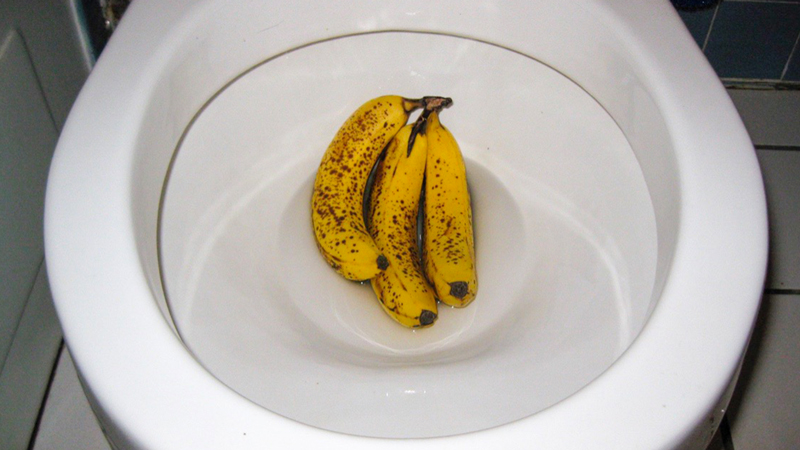Were you hunting for critical info involving What Can Happen If You Flush Food Down the Toilet??

Intro
Many individuals are usually confronted with the issue of what to do with food waste, specifically when it pertains to leftovers or scraps. One typical question that arises is whether it's fine to purge food down the bathroom. In this short article, we'll explore the reasons individuals may consider flushing food, the effects of doing so, and alternative methods for appropriate disposal.
Reasons people might consider purging food
Lack of understanding
Some individuals might not recognize the prospective harm brought on by flushing food down the toilet. They may incorrectly think that it's a safe technique.
Convenience
Flushing food down the commode may look like a fast and very easy solution to getting rid of undesirable scraps, particularly when there's no neighboring trash bin available.
Laziness
In many cases, individuals may just pick to flush food out of large laziness, without considering the consequences of their activities.
Effects of flushing food down the bathroom
Ecological effect
Food waste that ends up in waterways can add to pollution and harm water ecological communities. Additionally, the water made use of to purge food can stress water resources.
Plumbing issues
Purging food can lead to blocked pipelines and drains, triggering expensive pipes repairs and inconveniences.
Types of food that need to not be flushed
Coarse foods
Foods with fibrous appearances such as celery or corn husks can get tangled in pipelines and cause obstructions.
Starchy foods
Starchy foods like pasta and rice can absorb water and swell, bring about obstructions in pipelines.
Oils and fats
Greasy foods like bacon or food preparation oils should never ever be flushed down the commode as they can solidify and cause blockages.
Correct disposal techniques for food waste
Utilizing a garbage disposal
For homes geared up with garbage disposals, food scraps can be ground up and purged through the pipes system. However, not all foods are suitable for disposal in this manner.
Recycling
Specific food packaging products can be recycled, decreasing waste and decreasing environmental influence.
Composting
Composting is an environmentally friendly method to throw away food waste. Organic materials can be composted and used to enrich dirt for gardening.
The importance of correct waste administration
Minimizing ecological injury
Proper waste management practices, such as composting and recycling, assistance decrease air pollution and protect natural resources for future generations.
Safeguarding pipes systems
By avoiding the technique of flushing food down the toilet, homeowners can stop costly plumbing repair services and keep the integrity of their plumbing systems.
Conclusion
In conclusion, while it may be appealing to flush food down the toilet for comfort, it's important to understand the possible effects of this activity. By embracing proper waste management techniques and taking care of food waste responsibly, people can contribute to much healthier plumbing systems and a cleaner setting for all.
FLUSH FOOD DOWN THE TOILET?
FLUSHING FOOD CAN CAUSE BLOCKED DRAINS IN YOUR HOME
All of the plumbing fixtures in your home are connected to the same sewer pipe outside of your home. This outdoor sewer pipe is responsible for transporting all the wastewater from your home to the Council sewer mains. Even small pieces of food that go down the kitchen sink can cause problems for your sewer. It should therefore be obvious that flushing larger bits of food, such as meat, risks a clog in either the toilet itself or the sewer pipes. Flushing greasy food is even more problematic because oil coagulates when it cools, coating the interior lining of your pipes.
THE TOILET IS NOT A BIN
Food isn’t the only thing that people shouldn’t be flushing down the toilet. People use the toilet to dispose of all kinds of things such as tampons, makeup wipes, dental floss, kitty litter and even underwear. Water goes to great lengths to educate residents about the high costs and stress placed on wastewater treatment systems simply from people flushing the wrong stuff down the toilet. It costs taxpayers millions of dollars each year, and homeowners thousands in blocked drain repairs.
FLUSHING FOOD IS A WASTE OF WATER
Flushing food is a waste of our most precious resource - water. In June this year Level 1 water restrictions were introduced to protect water supply from drought conditions. Much of New South Wales continues to be affected by prolonged drought with recent figures revealing up to 97 per cent of the state remains in drought. Depending on whether you have a single or dual flush toilet, every single flush uses between five and 11 litres of water. In the current climate this is a huge amount of water to be wasting on flushing food that should be placed in the bin (or better yet, the compost).
https://www.jabplumbingsolutions.com.au/blog/can-you-flush-food-down-the-toilet

I stumbled upon that piece on when doing a lookup on the web. Do you know about another individual who is excited by the topic? Take a moment to share it. Thanks for being here. Please check up our website back soon.
Book 24/7